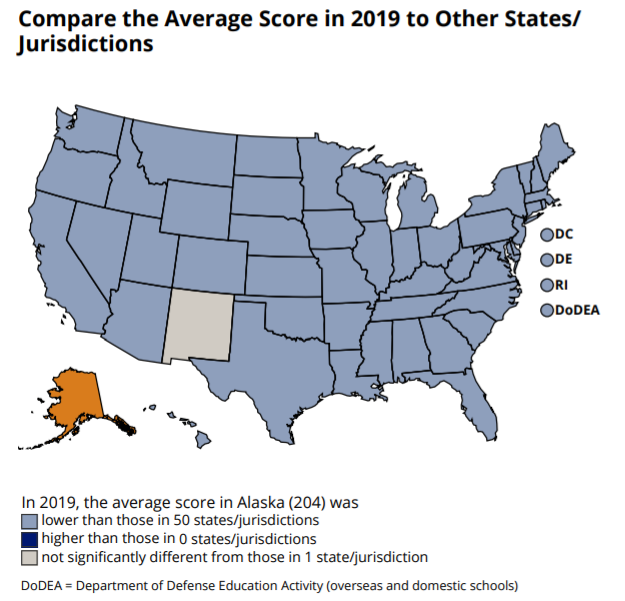Advocates of higher school spending often frame the problem as a no-brainer solution to assist struggling students. However, the school funding issue in Alaska is far more complicated; a recent report by the Education Law Center, titled “Making the Grade 2020,” reveals that Alaska already has the most progressive school funding in the nation. Progressivity in school funding means that high-poverty students and districts receive more money, per student, than students in low-poverty districts; this contrasts with regressive funding, in which low-poverty students would receive more per student. Instead of pouring even more money into high-poverty districts without any notable improvements in outcomes, funding students instead of systems would improve educational opportunities for students of all ages and income levels.
The Making the Grade 2020 report reveals that Alaska provides 73 percent more in per-pupil funding to high-poverty districts than to low-poverty districts. In other words, each student in a high-poverty district receives almost 1.75 times the amount that a student in a low-poverty district receives. According to the report, Alaska’s poverty rate of school-age children is 13 percent, which is lower than 30 other states. The second-most-progressive funding system exists in Utah, which provides 53 percent more in per-pupil funding to high-poverty districts than to low-poverty districts.
The report also classifies Alaska as a “high effort” state, which means that Alaska spends a larger-than-average share of overall GDP to support PK-12 education. While Alaska’s average per-capita education spending is the sixth highest in the nation, standing at $16,689 per student in FY18, students in low-poverty districts do not receive this amount toward their education, and students in high-poverty districts receive more.
Alaskan students face unique challenges, and per-capita education expenses may necessitate higher spending than in other states. However, Alaska’s education outcomes are dismal in comparison to other states that spend less overall and have less progressive spending to high-poverty districts. The map from the National Assessment of Educational Progress (NAEP) shows that Alaska’s test scores in 2019 8th Grade Reading were significantly lower than 47 other states, with similar results for other grades and subjects. Shouldn’t students in high-poverty and low-poverty districts alike be seeing improved outcomes with increased funding?

Source: The Nation’s Report Card: 2019. Search NAEP (ed.gov)
Though enhancing the education of students in high-poverty districts is a noble goal, and one worth pursuing, it would be better served by funding students directly. For being the most progressive ‘funder’ of education, student outcomes do not reflect that. It would be better to fund the students more directly because families rather than school boards know best what will work for them. If the tax dollars that would otherwise be funneled into bloated public schools and their administration were funding students rather than systems, every Alaskan student would have the opportunity to engage in education the way that works best for them. If the pandemic has had any positive aspects, it has shown that private schools, tutoring, online learning, micro-schools, homeschooling, or any combination are all valid options for students to gain an education that works best for them.